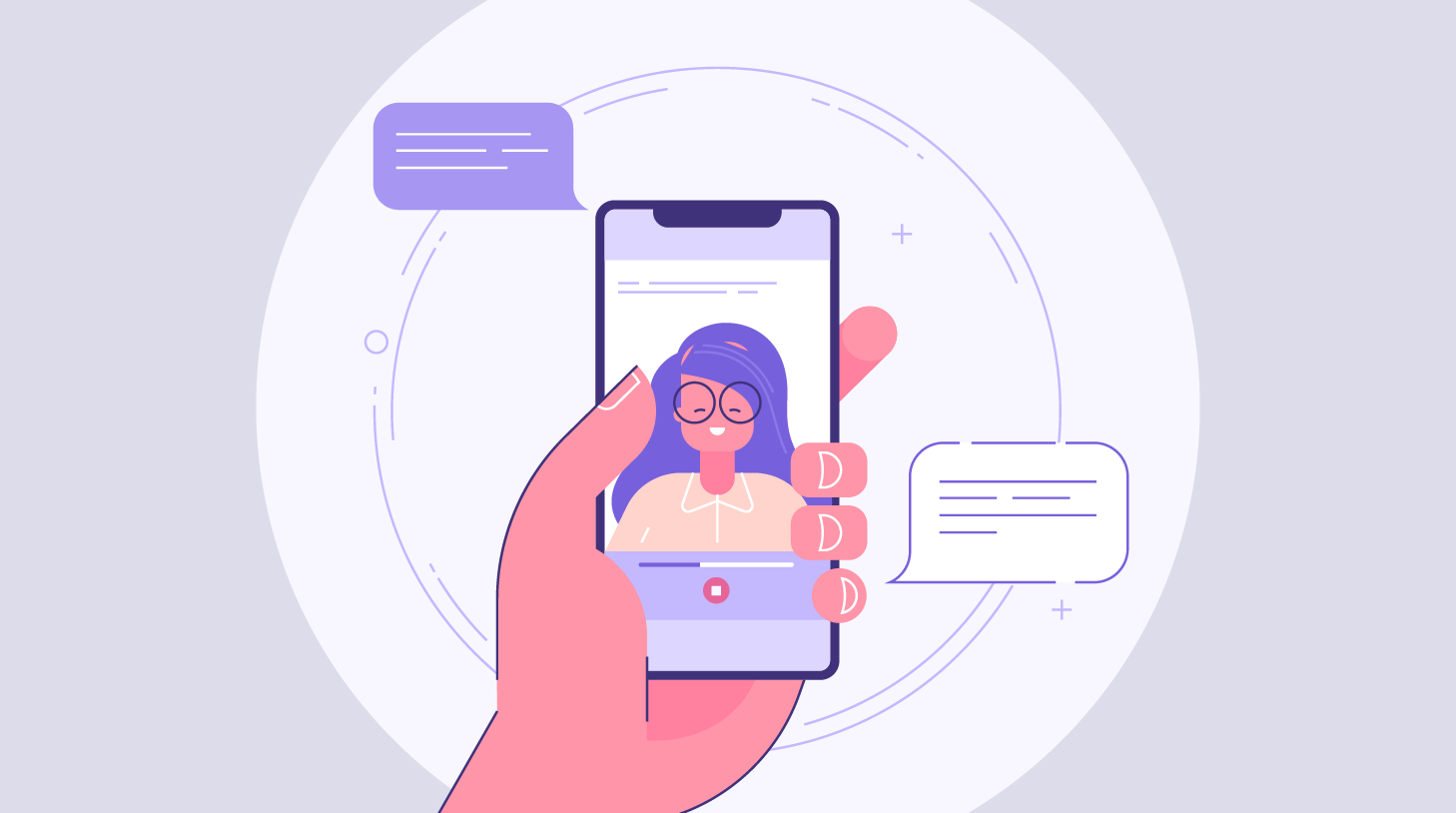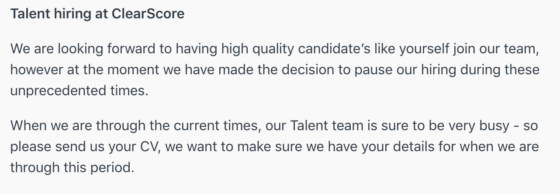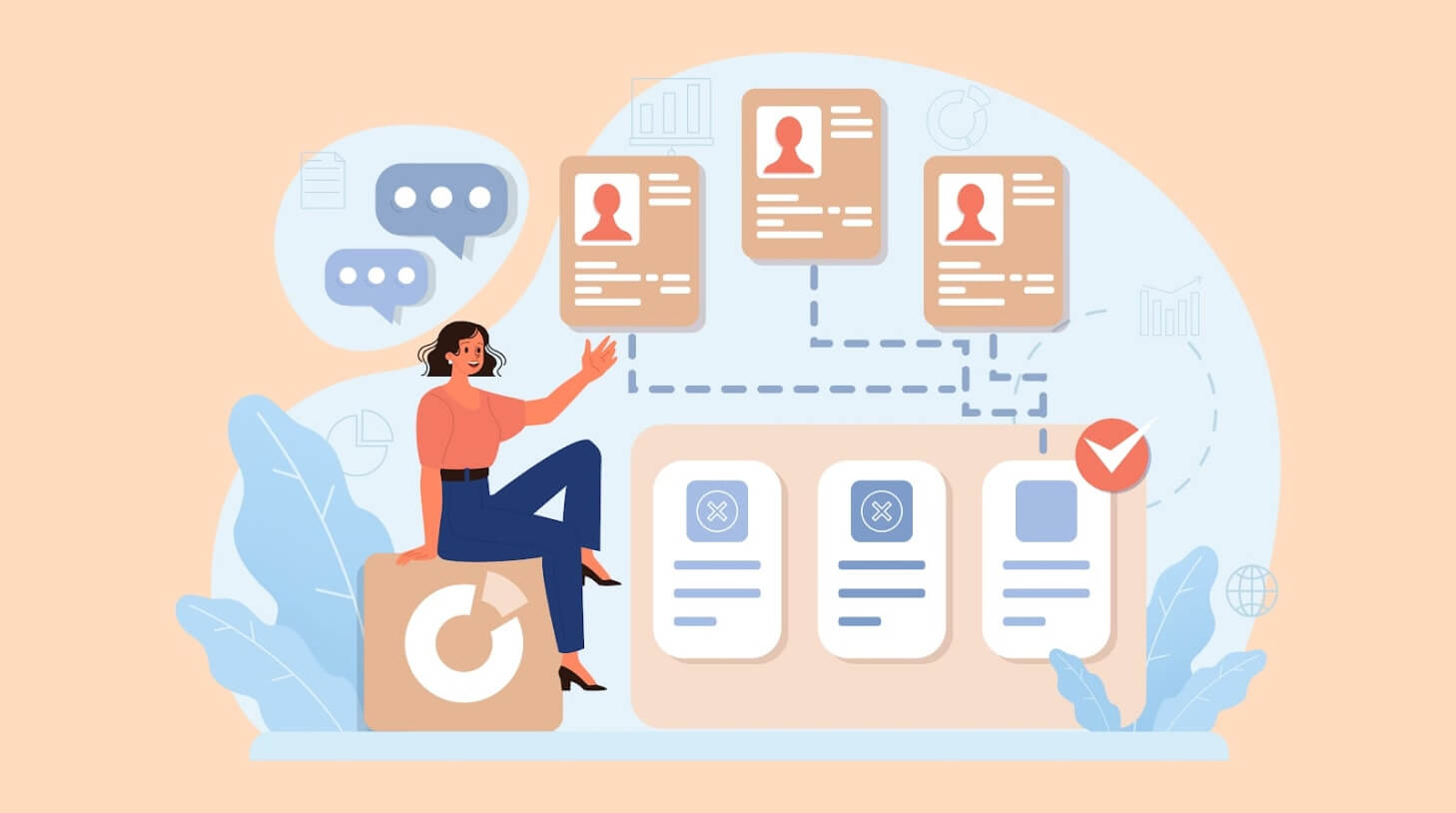Remote Hiring FAQs
Remote hiring offers value by expanding the talent pool beyond geographical boundaries, speeding up the hiring process, and reducing costs associated with travel and in-person interviews. It also allows for flexibility, making it easier to schedule and conduct interviews, thus improving the overall hiring experience.

Screening candidates through quick video calls before meeting them in person is not a new thing. But what if you make the entire hiring process virtual? How can you ensure that your hiring is successful when you only meet candidates online?
We turned to the experts, those who have been working remotely for many years, to get useful insights and tips on how to hire employees remotely. Here’s what they had to say:
- Should a remote time-to-hire be shorter or longer than an in-person time-to-hire?
- How can we structure a remote hiring process? For example, should we invest more time in final interviews?
- How can we get old-school executives/upper management to be more open to virtual interviewing?
- How can we engage candidates during a hiring freeze and build interest so they’re ready when we are?
- What software do you use/recommend for remote hiring?
- How can we explain the virtual hiring process to candidates, especially to those who are less tech-savvy?
- How can we prepare candidates for remote interviews?
- How does the remote hiring process for executive-level employees differ?
1. Should a remote time-to-hire be shorter or longer than an in-person time-to-hire?
A remote interview process doesn’t have to be sloppier than the traditional, in-person interviews. You can still have different hiring stages so that various team members meet and evaluate candidates. However, when you interview candidates remotely, you have the chance to speed up hiring, which eventually benefits your overall time-to-hire. Here’s how:
- One-way video interviews are pre-recorded, so you can evaluate them at any time, at your own convenience.
- You don’t have to block specific time for each candidate and you don’t have to reschedule if something else comes up.
- The entire hiring team can view recorded video interviews and decide whether they want to move on with a candidate or reject them. Otherwise, each interviewer will have to meet with candidates separately which is more time-consuming or you’ll have to conduct a panel interview which is harder to coordinate.
- You cut back on time spent sending directions, welcoming candidates to your offices, making travel arrangements if you’re in different locations, etc. Video interviews allow you to meet candidates without leaving your desk, which can make a huge difference when you’re scaling and have multiple interviews per day or week.
- When screening candidates through one-way video interviews, you can simply send one email with the questions or instructions to all candidates. Instead, if you rely on phone screens, you have to interview candidates one-by-one.
- It’s likely that some candidates will drop out of the hiring process if they have to invest time to record a video of themselves instead of the more traditional application form or phone screen. This leaves you with the candidates who are truly interested in the job and your company – i.e. you avoid spending time interviewing candidates who doubt whether they’re a good fit for the role.
- If you rely only on local talent, it might take you longer to find the candidate who fits your requirements. On the other hand, when you cast a wider net, by interviewing and hiring employees remotely, you increase your chances of finding the skills you’re looking for faster.
Brandi Hale, Head of People and Culture at Salad and Go, has found that video interviewing is a great solution when you’re scaling and can help you keep hiring in times of a crisis and mandatory social distancing:
“We’re using the new Video Interviews tool to pre-screen candidates and move quickly into the interview step. Normally, we have daily open interview sites, where any interested candidate can come by. This process is not possible for us right now due to the crisis. This tool has helped us be more efficient during this time and get our jobs done.”
2. How can we structure a remote hiring process? For example, should we invest more time in final interviews?
During a recent webinar on remote work that Workable and Hired co-hosted in light of COVID-19, Melissa Bruno, VP Head of People at Stack Overflow, mentioned that a remote interview process shouldn’t differ much from a regular, in-person one; it’s all about finding whether a candidate would be a good fit.
There are some nuances, though, when you hire candidates remotely, which means that you might need to tweak your interview process to make sure you hire the right people.
For example, founder and CEO at SmartBug Media, Ryan Malone, notes that it’s important to measure candidates’ resilience as well as their ability and willingness to work remotely.
Hope Weatherford, Head of Talent Attraction at InVision, shares some inside tips on how they run interviews at the final stages. As she explains, they’ve chosen to run brief interview sessions not only with team members the candidate will work directly with, but also cross-functional teams, from various levels.
“We really make sure that they’ve got a wide view of what it’s like to communicate in a 100% kind of a remote environment; the advantages that come along with that, and then also that gives us an opportunity to really get to know them.”
“At the end of the interview once everybody has gone through what we call their interview loop, we have all of the team, the interview team, come back together and we run a debrief the same way that you typically would if you’re going to go grab somebody in a conference room and talk about the candidate that you met. These debriefs can last anywhere from 30 to 45 minutes. Ideally, at the end of those debriefs, we walk away with a decision. It feels very similar to what would happen if somebody were coming in, in an all-day interview.”
Hope also shares how the interview process slightly changes for senior-level positions:
“If it’s a manager or higher position, we spend about 30 minutes really talking about and learning more about the candidates, in terms of how they lead or potentially see themselves as leaders in a remote environment.”
3. How can we get old-school executives/upper management to be more open to virtual interviewing?
Melissa Bruno, VP Head of People at Stack Overflow, reminds us that if the company is not tech-savvy, you will have to start from the basics.
“The first thing I would do is probably run an education class to help people get up to speed with some of the remote tools that we would be using. And I would probably start with the very basic Google Hangouts type of tools, because it’s the easiest to use.”
She also reminds us that leading by example can make a difference, so look for the people who are more willing to use virtual tools for hiring. “When you find those two or three people, make them your champions, teach them and help them spread the word. And then, they share and spread the really great things that we’re trying to initiate in the organization.”
Ryan Malone, founder and CEO at SmartBug Media, says that reluctance to use some of those tools is often a matter of confidence. So, he encourages supporting employees who feel less tech-savvy through mentorship, small videos, exercises and small wins where they can build momentum. He also notes that work friendships can be very helpful, as employees can address people they feel most comfortable with when they have quick questions instead of feeling they’re the ones raising their hand every time.
4. How can we engage candidates during a hiring freeze and build interest so they’re ready when we are?
A hiring freeze – whether it’s due to a global crisis like COVID-19 or internal company processes – is an uncomfortable situation. Since you can rarely say for sure when the hiring process will start again, it’s best to be honest about it and show empathy towards candidates.
For example, ClearScore, a UK-based fintech company, talks openly about the current situation and prompts job seekers to apply so that their hiring team can quickly reach out in the future:

Hope Weatherford, Head of Talent Attraction at InVision explained how a slowdown in hiring gives recruiters the chance to create meaningful relationships with candidates for future job opportunities:
Hope highlighted the importance of ensuring that candidates know these are just conversations:
“Because the last thing that you want to do is by no ill will, this candidate will think, ‘Oh, gosh, I’m interviewing for a job that I could start in three weeks or a month,’ or something like that. But just saying, ‘Hey, just being very open and upfront that we’re having conversations and we expect to hire this position at X amount of time.’”
Ryan Malone, founder and CEO at SmartBug Media, added:
“Be upfront with them and let them know that it’s not there yet, but that you care about them enough to invest the time. It means a lot.”
In uncertain times, you can’t talk about the things that are out of your control, but you can emphasize on what you know, as Hope said:
“While we may not know what tomorrow brings, we know the values and the principles in which our company lives by and we know, from an industry standard, where we stand, and where we anticipate to go.” Click To Tweet
5. What software do you use/recommend for remote hiring?
To run live video interviews with candidates, you can use popular tools such as Zoom, Google Hangouts and Skype. Candidates will be able to join the interview easily by following a link, so make sure to send them an invitation in advance.
If you want to conduct one-way video interviews with candidates, you can ask them to record their answers through software such as Vidyard or SparkHire. If you’re using an ATS, check whether it’s integrated with a video tool; this way the process will be more seamless. Here are some additional tips on how to choose the best video interview software to hire remotely.
When you want to evaluate candidates, beyond written assessments, you can use virtual whiteboards that facilitate interaction, such as FreeHand and Zoom Whiteboard.
For a better collaboration with the entire hiring team, make sure you use cloud software, like Google Docs and sheets, to share documents, an Applicant Tracking System to manage the hiring process and communication tools like Slack for quick updates. We’ve compiled a comprehensive list of tools to help you run a virtual workplace.
6. How can we explain the virtual hiring process to candidates, especially to those who are less tech-savvy?
Even for people who are familiar with technology, video interviews can be a bit intimidating if they’re used to being in an office setting. That’s why getting them comfortable with the remote hiring process is essential.
Start by making it clear that you’ll connect through video. Share some simple guidelines, explain how they’ll join the call or how they’ll record their answers and help them set up their equipment.
A good idea would be to create a guide with useful tips on how candidates can prepare for a video interview. You might also want to record a video where a recruiter or hiring manager from your company talks about the company or welcomes the candidate to the hiring process, in order to set the tone and give candidates a glimpse of your team before the interview.
Melissa Bruno, VP Head of People at Stack Overflow, adds that the virtual hiring process and the way you describe it to candidates should be aligned with your company culture. For example, at Stack Overflow, where they’re more casual, they encourage candidates to bring their true selves during the video call. “We actually invite people if they have a cat or a dog they want to introduce in their interview, they can do that, because I think it starts to build rapport.”
7. How can we prepare candidates for remote interviews?
While remote interviews don’t differ much from regular, in-person interviews, consider helping candidates prepare themselves before a video call. This way, both parts – interviewers and candidates – can focus on the actual interview. Here’s what you can do:
- Help them set up their equipment (camera, mic, video software)
- Share some quick troubleshooting tips (e.g. what to do if the internet connection is flaky)
- Give some alternatives beforehand in case of technical hiccups (e.g. “If you have trouble connecting to Zoom, call me at [number]”)
- Advice on how they can look better on camera (what colors work best, how to fix the lighting, how to choose their background, etc.)
An interesting aspect to take into account is the role you’re hiring for. If you’re looking for tech employees, the way they use the video technology could be part of the evaluation. Likewise, if you’re hiring for customer-facing roles, you’re probably measuring for ease of speech and good self-presentation.
Ryan Malone, founder and CEO at SmartBug Media, attests to that:
“Since we’re a digital agency, if somebody is really having a hard time creating a video, that might be a little bit of a red flag for a certain role,” he says. “But we try to make it as easy as possible and we don’t want people to spend two days producing some video. We just want to hear you talk. Are you articulate? Can you convey an idea? Is your space well kept? They’re going to represent our brand so, short of telling them who they’re going to interview with, we don’t give them any preparation at all, because that’s part of the interview for us.”
8. How does the remote hiring process for executive-level employees differ?
For executive or C-level roles, it might be useful to schedule in-person interviews during the final hiring stage. You’ll be working closely with them and they’ll be driving many business decisions, so it’s crucial to build that more personal connection.
Ryan Malone, founder and CEO at SmartBug Media, explains why and how they schedule these in-person interviews:
“We do try to meet people face-to-face, because at the end of the day, you want to spend a significant amount of time with that person. And I think they appreciate the investment,” he adds. “There’s an opportunity cost of not taking something else. So, you want to meet [C-level candidates] in person, because it’s also a chance for you to demonstrate for them that you have your act together. We recently hired a COO. Everything was remote except for the last couple interviews and those were in person over a full day basically.”
Hope Weatherford, Head of Talent Attraction at InVision, highlights the importance of a strong communication path and multiple check-ins throughout the hiring process.
“We have our CEO do multiple check-ins and deeper dive conversations as they’re going through the interview process, just depending on the specific role. And then, when we get to that final conversation, that’s the in-person conversation, it flows a lot better and it’s not nearly as uncomfortable.”
Whether final interviews are remote or in-person, talking to the CEO – or someone from the senior management – of the company you’re interviewing at can impact your decision to accept a job offer or not, particularly if you’re a senior-level candidate yourself. Ryan elaborates on that:
“We’re still of the size where I interviewed the last interviewer and it’s not a control thing. It goes back to that unwritten rule, which is, you’re choosing us versus something else. And you should be able to ask anything you want of the person who’s driving the strategy of the company. It’s also a chance for me to convey what we’re trying to build. I think hearing that from somebody high up at the company means a lot to a candidate.”
Want to learn more about how to make remote work successful at your company? Read our guide on remote onboarding.
Frequently asked questions
- Does remote hiring affect the time-to-hire compared to in-person hiring?
- Remote hiring can potentially speed up the hiring process. With tools like one-way video interviews, hiring teams can evaluate candidates at their convenience, without scheduling specific times for each candidate. This flexibility can reduce time spent on coordinating interviews, sending directions, and making travel arrangements, thus improving the overall time-to-hire.
- How should a remote hiring process be structured?
- A remote hiring process should be similar to an in-person one, focusing on whether a candidate is a good fit. However, there are nuances when hiring remotely. It's important to measure candidates' resilience and their ability to work remotely. For final interviews, it can be beneficial to include brief sessions with cross-functional teams to give candidates a wide view of the company's communication dynamics.
- How can we convince traditional executives to adopt virtual interviewing?
- Educating executives about remote tools and their benefits can help. Start with basic tools like Google Hangouts and identify champions within the organization who are willing to use virtual tools for hiring. These champions can help spread the word and share the benefits of remote hiring. Also, providing support and mentorship to those less tech-savvy can build confidence in using these tools.
- How can we engage candidates during a hiring freeze?
- During a hiring freeze, it's important to be honest and empathetic towards candidates. You can engage candidates by having open conversations about the situation and the company's values. This approach can help build meaningful relationships with candidates for future job opportunities. It's also crucial to ensure that candidates understand these are just conversations and not formal interviews.
- What software is recommended for remote hiring?
- For live video interviews, tools like Zoom, Google Hangouts, and Skype are popular. For one-way video interviews, software like Vidyard or SparkHire can be used. Other tools like virtual whiteboards facilitate interaction, while cloud software like Google Docs and communication tools like Slack can improve collaboration with the hiring team. An Applicant Tracking System can also help manage the hiring process.




